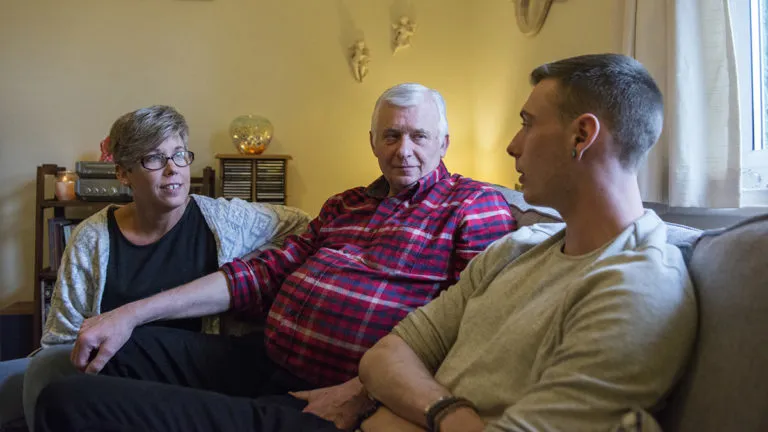Social Housing: Theresa May’s Legacy?
Published: by Tarun Bhakta

Years from now, when the history of Theresa May’s record on housing is written, it will remain impossible to ignore the fire at Grenfell Tower.
Few events change the course of debate the way this did. In the two years since the fire, the public discourse on social housing has made a profound and welcome turn. But meaningful changes in policy have been much slower to come.
Today, people living in social housing are still being failed by poor regulation and social homes continue to be sold off more quickly than they’re replaced. With a huge gulf between the levels of new social homes needed and those being delivered, much more needs to be done to tackle our chronic housing emergency.
The job of the new prime minister is clear: fulfil the promise of May’s step forward in rhetoric and build the social homes we need.
Disaster and discourse
Above all else, the Grenfell Tower fire is remembered as a devastating loss of life.
But it did not happen in a bubble. The fire came after years of marginalisation of social housing tenants, who were left without proactive consumer regulation and seen as a soft target for spending cuts.
After the fire, it would have been tough for any government to carry on in the same way.
May contributed to a shift in the discourse, lamenting that ‘many people in society – including too many politicians – continue to look down on social housing and the people who call it their home’ and promising ‘a new generation of social rented homes’.
A social housing green paper followed, billed as an opportunity to improve fairness, quality and safety for social housing residents. This publication would have been inconceivable under the previous government, which marked a low point for social housing.
In practice, May’s government struggled to manage the practical consequences of the fire itself, with hundreds of households left homeless or in unsuitable accommodation as a direct result of the fire – including those not covered by the local rehousing policy.
And on the eve of the second anniversary of the tragedy, projections organised by Grenfell United illuminated high-rise blocks across the country as a reminder that many are still fitted with flammable Grenfell-style cladding or have other fire safety failings; an issue highlighted again this week by a Parliamentary Committee.
Modest, meaningful steps
Beyond the rhetorical shift and struggles with crisis-management, progress on meaningful reform has been only modest.
The greatest successes have largely come in undoing the harm done by May’s predecessors. There was the partial reversal of both 60% cuts to the affordable housing grant and the explicit exclusion of new social rent housing schemes from accessing grant. Though most of the money was still for ‘affordable housing’, much of which is not affordable to people on average or low incomes, money was explicitly provided for 12,500 social rent homes.
Damaging provisions contained in the Housing and Planning Act 2016 were also shelved. These included plans to [force councils to sell](http://england.shelter.org.uk/__data/assets/pdf_file/0016/1250341/Report_stage_-_Forced_council_sales_amendment.pdf(opens in a new tab)) much-needed homes, [end secure lifetime tenancies](http://england.shelter.org.uk/__data/assets/pdf_file/0015/1250340/Report_stage_-_Secure_tenancies_amendment.pdf(opens in a new tab)) and increase social rents on households earning more than £30,000.
The most significant measure breaking new ground came in her 2018 party conference speech, when May announced the lifting of the Housing Revenue Account borrowing cap, allowing councils to borrow more to build up to an estimated 10,000 more homes a year.
The full effects of this change will take time to materialise, but they are far from insignificant. The announcement was celebrated across the housing sector and councils have already begun to build more as a result.
The job left to do
These steps have been welcome, but they are well short of the changes that are needed.
While the changes could see thousands more social homes built, our social housing commission identified the need for 3.1 million new social homes over the next 20 years. In coalition with the National Housing Federation, the Chartered Institute of Housing, Crisis and the Campaign to Protect Rural England, we have called on the government to invest £12.8 billion a year to build a new generation of social housing. Though the cost of land remains a significant barrier to getting more social homes built, May’s government shied away from the necessary reforms.
Last year, only 6,434 additional homes for social rent were provided. In fact, sales (primarily through the Right to Buy), building demolitions and conversions have outstripped this figure resulting in a net loss of more than 15,000 social rent homes, leaving 1.1 million people on social housing waiting lists, and almost 280,000 people in England homeless.
And two years on from the Grenfell Tower fire, social housing tenants have seen no change to the regulatory system. We’re standing with Grenfell United in urging the next prime minister to introduce a new consumer regulator for social housing.
For the first time in decades, the importance of social housing is genuinely being recognised and serious consideration being given to improving and expanding it. The next prime minister must make good on all this talk and promise with real action.